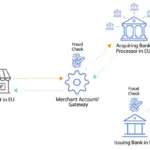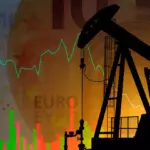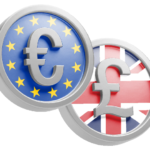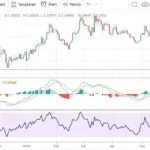Introduction
As the investment world evolves, so do the tools investors use to capture emerging opportunities. One of the fastest-growing innovations in modern finance is the thematic exchange-traded fund (ETF) — a type of fund designed to let investors target specific long-term trends and ideas, rather than just sectors or regions.
From artificial intelligence and clean energy to space exploration and cybersecurity, thematic ETFs offer a way to invest directly in the future — aligning portfolios with transformative forces shaping global economies. In 2025, these funds are no longer niche products; they’re becoming a mainstream investment strategy.
1. What Are Thematic ETFs?
A thematic ETF is an investment fund that focuses on a particular theme or trend rather than traditional market classifications like industry or geography.
For example, instead of investing in the “tech sector,” a thematic ETF might target:
- AI and robotics (e.g., Global X Robotics & Artificial Intelligence ETF)
- Clean energy (e.g., iShares Global Clean Energy ETF)
- Digital payments (e.g., ARK Fintech Innovation ETF)
- Cybersecurity (e.g., First Trust NASDAQ Cybersecurity ETF)
These ETFs allow investors to gain exposure to a basket of companies driving innovation in a specific area, often blending multiple industries under one powerful theme.
2. Why Thematic Investing Is Growing in Popularity
Thematic ETFs have exploded in popularity over the past five years — and for good reason. According to Morningstar, global assets in thematic ETFs surpassed $400 billion in 2024, driven by a new generation of investors eager to align their portfolios with their beliefs and visions for the future.
a. Access to Innovation
Investors can easily access emerging technologies and industries — from biotech breakthroughs to space tourism — without needing to pick individual stocks.
b. Alignment with Global Trends
Themes like sustainability, AI, climate action, and digital transformation reflect megatrends expected to define economic growth for decades.
c. Diversification within a Theme
By holding dozens of companies in one theme, investors reduce single-stock risk while maintaining focus on an innovative niche.
d. Long-Term Growth Potential
Thematic ETFs often capture early growth stages of transformative industries, providing significant upside over time for patient investors.
3. Key Themes Driving ETFs in 2025
The world in 2025 is defined by rapid technological evolution, demographic shifts, and sustainability initiatives. Here are the top thematic trends fueling ETF growth this year:
1. Artificial Intelligence and Automation
The AI revolution remains unstoppable. ETFs focusing on AI infrastructure, robotics, and data analytics — such as Global X Robotics & AI ETF (BOTZ) and ARK Autonomous Technology & Robotics ETF (ARKQ) — continue to attract massive inflows.
Why it matters: AI is becoming integral to every industry, from manufacturing to finance and healthcare.
2. Clean Energy and Sustainability
The global push toward net-zero emissions and green technology is powering interest in renewable energy ETFs like iShares Global Clean Energy (ICLN) and Invesco Solar ETF (TAN).
Why it matters: Governments and corporations are investing billions into climate-friendly infrastructure, creating long-term tailwinds.
3. Digital Finance and Fintech
As digital banking, blockchain, and contactless payments become mainstream, fintech-focused ETFs — such as ARK Fintech Innovation ETF (ARKF) — give investors exposure to companies modernizing financial systems.
Why it matters: The future of money is digital, and fintech firms are leading that transformation.
4. Cybersecurity
With rising global cyber threats, companies and governments are prioritizing data protection. ETFs like First Trust NASDAQ Cybersecurity ETF (CIBR) offer diversified exposure to this mission-critical industry.
Why it matters: Cybersecurity is now a non-negotiable component of the global digital economy.
5. Healthcare Innovation
The healthcare sector is being revolutionized by biotech, telemedicine, and AI-driven diagnostics. ETFs such as iShares Genomics Immunology and Healthcare ETF (IDNA) target firms pioneering next-gen medical solutions.
Why it matters: Aging populations and medical innovation are reshaping global healthcare markets.
4. Advantages of Thematic ETFs
a. Accessibility
Investors can participate in complex or emerging industries without requiring specialized knowledge or direct stock picking.
b. Affordability
Most ETFs have lower fees than actively managed funds, offering cost-effective exposure to high-growth themes.
c. Transparency
Thematic ETFs publicly disclose their holdings, allowing investors to see exactly which companies they’re supporting.
d. Liquidity
Traded on major exchanges, thematic ETFs are easy to buy and sell — combining flexibility with long-term growth potential.
5. Risks and Challenges
Despite their appeal, thematic ETFs come with specific risks that investors should understand:
- Concentration Risk: Thematic ETFs often hold fewer stocks, which can amplify volatility.
- Timing Risk: Entering a theme too late (after hype peaks) may limit returns.
- Valuation Risk: Some innovative sectors trade at high valuations that may not yet reflect profitability.
- Short-Term Hype: Not every trend will become a sustainable megatrend — some may fade quickly.
The key is to treat thematic investing as a long-term conviction strategy, not a short-term speculation play.
6. How to Invest Wisely in Thematic ETFs
a. Focus on Fundamentals
Choose themes supported by strong economic or technological drivers — not just popular buzzwords.
b. Diversify Themes
Balance high-growth themes (e.g., AI, biotech) with steady ones (e.g., infrastructure, clean energy).
c. Check ETF Composition
Review top holdings, geographic exposure, and fund size before investing.
d. Invest for the Long Run
Thematic ETFs work best when held for 5–10 years, allowing megatrends to unfold.
7. The Future of Thematic Investing
In 2025 and beyond, thematic ETFs are moving from niche to mainstream investment vehicles. As younger generations enter the market, investors are prioritizing purpose-driven portfolios that reflect both profit potential and personal values.
New frontiers such as space technology, quantum computing, and the metaverse are likely to spawn the next wave of thematic ETFs — creating opportunities for those who see beyond the horizon.
Conclusion
The rise of thematic ETFs represents more than just a financial innovation — it’s a shift in how people think about investing. Instead of following markets, investors are now betting on ideas, technologies, and transformations that will define the future.
By understanding the risks, diversifying themes, and staying committed for the long term, investors can use thematic ETFs to build portfolios that are not only profitable — but visionary.
In 2025, investing isn’t just about owning stocks. It’s about owning the future.













